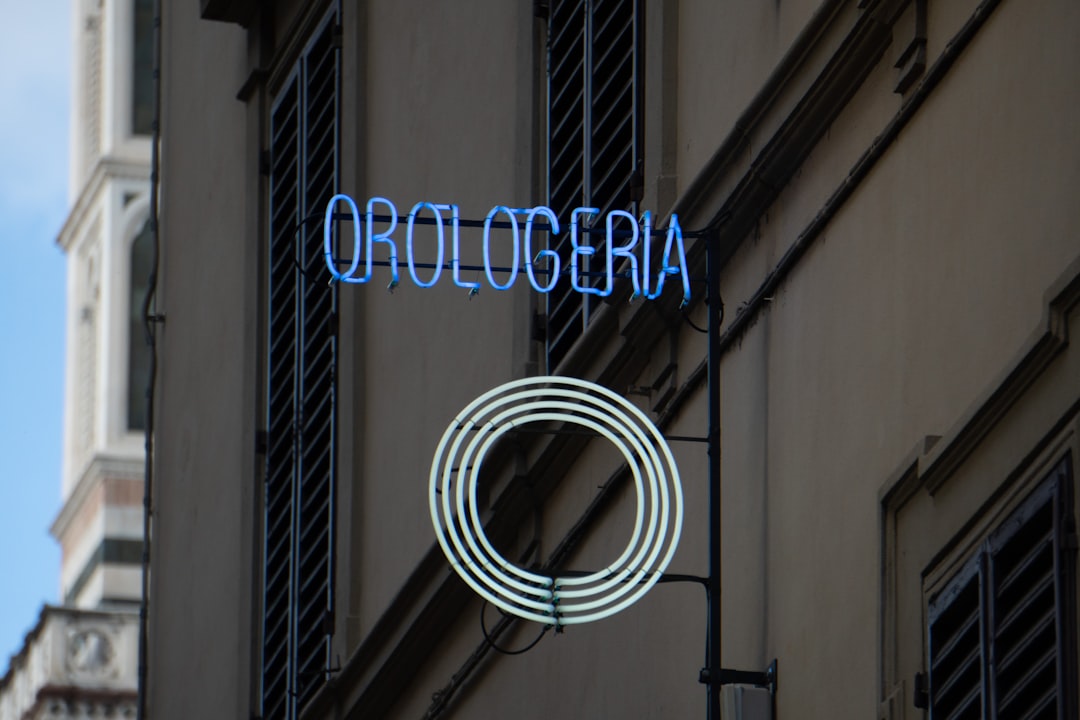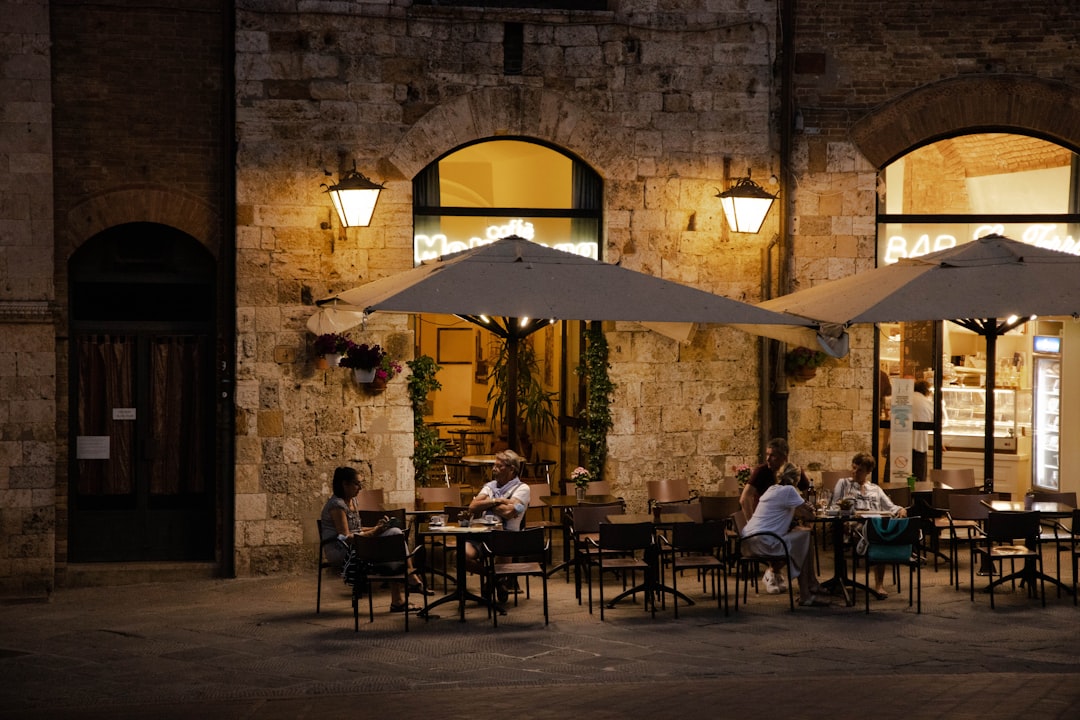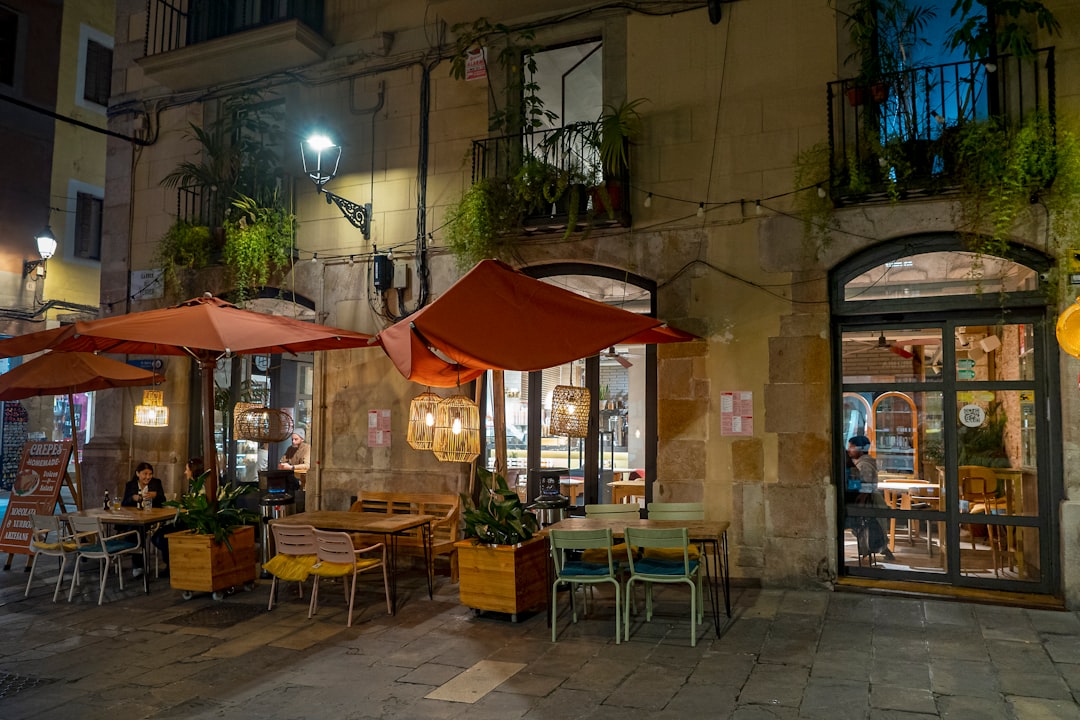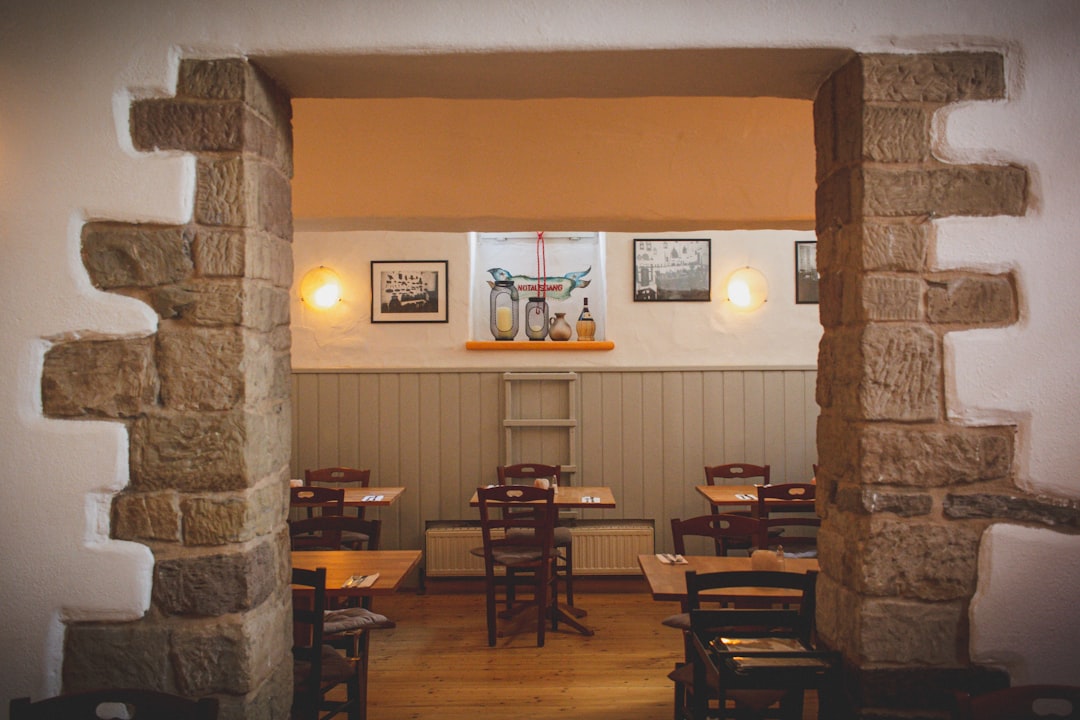

Engage prospects with a scan and streamline customer engagement with FREE QR code marketing tools by Sona – no strings attached!
Create a Free QR CodeFree consultation

No commitment

Engage prospects with a scan and streamline customer engagement with FREE QR code marketing tools by Sona – no strings attached!
Create a Free QR CodeFree consultation

No commitment
Digital experiences are reshaping how Italian restaurants attract and serve diners, and QR codes have become vital for operational efficiency and guest engagement. Traditional workflows like paper menus, manual waitlists, and printed coupons create friction and slow the journey from interest to order. Moreover, crucial guest data is often missing from restaurant CRMs, making it difficult to personalize offers or follow up with high-value visitors.
In an industry where ambiance, authenticity, and speed build the reputation of the best Italian restaurants, linking offline touchpoints such as tabletop menus and wine lists with seamless digital journeys is now crucial. QR codes let restaurants streamline ordering, increase table turns, and launch dynamic promotions without altering the in-restaurant experience. Yet, operators frequently lack visibility into which guests engage with specific touchpoints, resulting in missed opportunities for targeted upsell and engagement.
By integrating QR codes across guest interactions, from menus and ordering to reviews and loyalty offers, Italian restaurants can create memorable dining experiences without compromising tradition. Thoughtfully deployed, QR code systems deliver real-time signals across guest journeys, reducing friction for diners and staff alike. This guide shows marketing leaders and restaurateurs how to use QR innovation to meet evolving consumer expectations, improve guest tracking, and build loyalty while celebrating the timeless appeal of Italian cuisine.

QR codes bridge the gap between physical charm and digital convenience for Italian restaurants, helping drive higher order velocity, guest satisfaction, and conversion rates. They remove bottlenecks caused by paper menus that go out of date, verbal specials that get forgotten, or manual payment flows that lead to longer table occupancy. By putting actions a scan away, you shorten the path from curiosity to check, while capturing data you can use to improve the experience.
Restaurants often lose high-value prospects because preferences or visit intent are not tracked or actionable in the CRM, making follow-up almost impossible. QR workflows convert anonymous interest into known signals. For example, scanning a wine list QR and saving a pairing suggestion indicates interest in a varietal; scanning a takeout menu QR and abandoning the cart reveals a gap in pricing or delivery time. When those signals flow into your CRM and marketing tools, your team can retarget with relevance instead of guesswork.
Steps to Implement QR Workflows:
Whether transitioning from paper menus or modernizing the reservation process, QR code implementation accelerates guest action at every touchpoint and makes campaign success measurable. You replace analog workflows like printed specials or manual waitlists with responsive digital flows that respect the ambiance of an Italian dining room while boosting throughput and loyalty.

Italian restaurants face specific challenges: frequently changing menus, unique promotions like regional tasting nights, and rising guest expectations around convenience. Some guests want to order immediately; others want detailed information about ingredients, origin, or wine pairings. Promotions can miss the mark when there is no way to see who actually engages, which leads to lost revenue and missed follow-up opportunities.
QR codes help streamline these realities by making it simple for anyone to take action without downloading an app. A diner can scan for the pasta of the day, add a burrata starter, watch a short video on the chef’s inspiration, and pay when ready. Managers can update an out-of-stock dish in seconds, swap in a new Sicilian dessert, or highlight a Nebbiolo flight before a weekend rush. Everything is accessible and measurable, which supports faster decision making.
QR codes address these issues by:
These benefits help Italian restaurants stay agile while preserving the warmth and authenticity guests expect. You get the best of both worlds: tradition at the table and intelligence in the background.

Italian restaurants benefit from QR code formats that directly address operational and marketing gaps, especially around data capture and guest segmentation. Choosing the right format ensures you deliver the correct experience in the right context, whether the goal is ordering, education, or loyalty.
Static QR codes work when the destination will not change, like a link to your evergreen brand story or a PDF of your wine cellar overview. Dynamic QR codes are better for menus, promotions, or anything that requires flexibility or tracking. You can change the destination after printing and view analytics across time, device, or location. Most restaurants end up using a mix, with dynamic codes for high-impact guest interactions and static codes for low-risk, unchanging content.
With a centralized platform like Sona QR, you can generate all these formats, manage them from one dashboard, and ensure each scan contributes data to your CRM and analytics stack.
Key QR touchpoints in Italian restaurants reveal value in guest behaviors that traditional methods often miss. By mapping your dining room and marketing assets to specific scan moments, you learn where guests are curious, ready to order, or primed for loyalty.
Start with the in-restaurant journey. Tabletop codes enable ordering and payment; wine list codes surface pairing education and higher-margin recommendations; receipt codes drive reviews after the meal. Then expand to your broader footprint, like windows for walk-in waitlists or direct mail that leads to reservation incentives. Each placement should match a clear intent and deliver an action that feels helpful.
These touchpoints close the gap between campaigns and analytics. Restaurant leaders gain line-of-sight to what works and can invest in the placements that consistently move diners to action.
QR codes become most valuable when they solve a real operational or marketing problem. The following use cases reflect common Italian restaurant moments that benefit from faster ordering, richer storytelling, and smarter data capture.
Start by piloting one or two high-impact use cases, then layer in others as your team gains confidence. The goal is to respect the hospitality of an Italian dining room while turning interest into action in ways that feel natural.
These use cases ensure engaged guests are recognized and followed up with, which reduces churn and opens new upsell opportunities. Over time, the data they generate helps you refine menu engineering, staffing, and promotional calendars.
Italian restaurants often miss retargeting promising diners because they lack tracking from offline interactions. Each scan is a signal that captures intent, context, and preference. With a strategic QR map across your guest journey, you can organize those signals into segments that power targeted, respectful follow-up.
The key is to tag scans in ways that align with business goals. A scan on the dessert menu indicates interest in sweets; a scan from a direct mail piece suggests awareness-stage curiosity; a scan on a wine pairing video signals a higher willingness to explore premium options. These distinctions let you tailor messages so they feel like service rather than sales.
With Sona QR, each scan can be automatically enriched and routed to the right system. This lets your team engage with precision and keeps valuable diners from slipping through the cracks.
Siloed marketing confuses guests and weakens brand identity. QR codes unify your message by turning every touchpoint into a consistent, measurable path. The trick is to respect the ambiance of an Italian restaurant while using QR placement and design to guide, not overwhelm.
Start by aligning the QR destination with the physical context. A code on a wine bottle should open pairing content, not a generic homepage. A code on a window should open a mobile-friendly waitlist, not a lengthy form. This alignment is what makes QR codes feel like hospitality rather than technology.
Multi-channel QR integration makes every touchpoint measurable and effective. With a centralized platform like Sona QR, you can manage codes across channels, monitor performance, and feed scan activity into CRM segments and ad audiences automatically.
Clarify what success looks like before generating a single code. Are you trying to reduce order time per table, fill a Thursday tasting menu, or increase five-star reviews on Google and Yelp? A precise goal lets you tailor the destination experience and measure results accurately.
Translate each goal into a primary call to action and one simple after-action. For example, Promote chef’s tasting menu becomes Scan to reserve a seat with a follow-up of Add to calendar and reminder emails. Keep steps short so guests can complete them in seconds.
Use static codes for destinations that will not change often, like a brand story page or a video tour. Static codes print cleanly and require minimal management once deployed. This approach works well for signage with a long life, such as an entryway poster.
Use dynamic codes for anything you might edit or optimize. Menus, promotions, events, and loyalty offers benefit from the flexibility to update links, A/B test content, and view detailed analytics. Dynamic codes reduce reprint costs and increase data quality.
Make your QR codes feel like part of your restaurant’s identity. Use colors inspired by your interior design, add a subtle logo in the center if your generator supports it, and include a short, benefit-driven CTA nearby. Examples include Scan for today’s specials, Scan for wine pairings, or Scan to pay.
Prioritize scannability. Ensure strong color contrast, adequate quiet space around the code, and a size that suits the viewing distance. Test on a range of devices in real lighting conditions. Place codes where glare and shadows are minimal to reduce failed scans.
Start with the assets that influence ordering and payment. Table tents, menu inserts, and check presenters are prime real estate for QR codes. Link each placement to a unique tracking URL so you can attribute performance accurately and compare locations or creative variations.
Expand to exterior placements and off-premise materials once you see results. Windows and doors can capture walk-by traffic, while coasters, wine bottles, and delivery bags can lead to higher-margin add-ons, loyalty enrollment, or post-meal feedback.
Use this checklist to tailor QR deployments to the unique style of your restaurant for better results.
Track scans, clicks, conversions, and revenue attributed to each code. Look at time-of-day patterns, device mix, and the pages that cause drop-offs. Optimize your landing pages, rework copy, and adjust CTAs based on what the data shows.
Sync scan events into your CRM or CDP so you can score engagement and build segments. Trigger email or SMS reminders for abandoned reservations, invite high-engagement guests to VIP experiences, and test retargeting ads that mirror the dining preferences revealed through scans.

Many Italian restaurants struggle to connect in-house interactions to actual business results. A server might believe the seasonal risotto sells best, but the numbers may tell a different story by daypart or table location. Linking scans to menu actions and check outcomes helps you make decisions with confidence and speed.
Advanced QR tracking lets you move beyond vanity metrics. You can measure how often a table scans, which categories they explore, whether a scan leads to an order, and how those micro-actions correlate with spend. When you enrich guest profiles with this data, your offers and service become smarter, not more complicated.
With Sona QR and Sona.com, you can capture real-world engagement data, connect it to known profiles, and attribute revenue across the journey. Identity resolution and multi-touch attribution provide the missing link between a scan at the table and a reservation made next week, which elevates QR from a convenience tool to a performance channel.
QR codes thrive when they are thoughtfully deployed and supported by your team. Small improvements in design, placement, and follow-up can produce outsized gains. Think of your QR program as a living system that evolves with your menu, seasons, and events.
Encourage staff to advocate for scanning by explaining the benefit clearly. If a QR on the wine list offers pairing guidance from your sommelier, servers can mention that it makes choosing easier and more fun. If a QR on the receipt leads to a 30-second feedback form, servers can frame it as a way to help the kitchen perfect tomorrow’s specials.
These practices ensure every code drives repeat visits, loyalty, and marketing efficiency. Over time, you will have a robust engine that converts offline curiosity into online action with measurable impact.

QR codes shine when they complement the hospitality that defines Italian dining. The following examples show how operators use QR to enhance storytelling, speed service, and build community, all without disrupting ambiance.
The most successful campaigns balance education with action. A short video from a sommelier builds confidence to try a new varietal, while a one-tap reservation link removes friction. A dessert QR that unveils a secret menu adds delight and encourages repeat visits.
Data-driven campaigns fused with authentic storytelling deliver lasting value for both operators and guests. The numbers help you optimize; the stories keep people coming back.
QR performance depends on clarity, context, and consistency. The best codes are easy to find, fast to scan, and crystal clear about what happens next. The worst codes are hidden, overloaded, or point to destinations that simply do not work well on mobile.
Avoid designing in a vacuum. Walk your dining room during service, at lunch, and at dinner. Check glare, scan distance, and table clutter. Ask servers to test scans with busy hands. These practical checks prevent many pitfalls before guests encounter them.
These tips help safeguard performance and uphold your restaurant’s reputation for thoughtful hospitality. The goal is to make technology invisible and the experience unforgettable.
QR codes now stand at the intersection of tradition and innovation for Italian restaurants, giving owners a powerful tool to meet guests wherever they are, physically and digitally. They transform every menu page, wine bottle, and sign into an interactive gateway that accelerates ordering and strengthens the emotional connection to Italian cuisine. QR-driven analytics mean high-value prospects no longer remain anonymous, which lets restaurants respond with personalized and timely outreach.
Modern QR code platforms create instant engagement, unlock deep audience insights, and turn every guest interaction into a measurable growth opportunity. Teams that fully leverage QR codes achieve both workflow efficiency and memorable guest experiences. Capturing engagement signals from every scan reduces churn and ensures the right guests get the right offer at the right time.
With today’s QR solutions, Italian restaurant marketers and operators blend classic hospitality with data-driven marketing, delighting guests, fine-tuning campaigns, and driving sustainable growth from every scan, all while building lasting guest relationships. If you are ready to experiment, start by generating your first dynamic QR codes, map them to a few high-impact placements, and monitor results weekly. Platforms like Sona QR make it easy to create, brand, and track codes, then sync scan data into Sona.com and your CRM so you can connect scans to revenue and scale what works. Start creating QR codes for free.
QR codes have revolutionized Italian restaurants by transforming traditional ordering into a fast, seamless, and interactive experience. By enabling diners to browse menus, customize orders, and pay instantly from their smartphones, QR codes not only speed up service but also elevate the overall customer journey. Imagine eliminating wait times and boosting table turnover, all while capturing valuable data on customer preferences and behaviors.
With Sona QR, Italian restaurants can easily create dynamic, trackable QR codes that update in real time—no reprinting necessary. This means you can adapt menus seasonally, promote specials instantly, and connect every scan to increased revenue and repeat visits. Beyond speeding up orders, QR codes become powerful tools for customer acquisition and loyalty, helping your restaurant stand out in a competitive market.
Start for free with Sona QR today and turn every scan into a faster order, a happier guest, and a stronger bottom line.
QR codes streamline ordering, increase table turns, enable dynamic promotions, capture guest data for personalized marketing, and enhance guest engagement without disrupting the traditional dining experience.
QR codes allow diners to browse, customize, and pay orders tableside, reducing wait times and errors while generating data on guest preferences and spending.
Yes, QR codes can link to menus that highlight vegan or gluten-free dishes and help segment guests by dietary preferences for personalized recommendations.
Common formats include static codes for fixed content like brand stories, dynamic codes for menus and promotions that update in real time, feedback forms, Wi-Fi access, and app downloads.
Restaurants use QR codes to offer sommelier pairing videos, secret menus, event RSVPs, loyalty rewards, and interactive storytelling that deepen guest engagement and encourage repeat visits.
By assigning unique QR codes to different touchpoints and linking scans to CRM systems, restaurants collect detailed behavior data, measure campaign performance, and attribute revenue to specific QR interactions.
Best practices include placing QR codes in visible, contextually relevant locations, designing branded codes with clear calls to action, using dynamic codes for flexible content, training staff to encourage scanning, and monitoring performance for continuous optimization.
QR codes capture guest preferences and behaviors that feed into CRM segmentation, enabling personalized follow-ups, targeted marketing, and loyalty program enrollment that increase repeat visits.
Platforms like Sona QR provide centralized dashboards to generate, brand, track, and manage QR codes while syncing scan data with CRM and marketing tools for comprehensive analytics and audience building.
While the article focuses on restaurant use, diners can scan QR codes linked to menus, reviews, and exclusive offers that showcase popular Italian dishes and help discover top-rated local Italian restaurants.
Use Sona QR's trackable codes to improve customer acquisition and engagement today.
Create Your FREE Trackable QR Code in SecondsJoin results-focused teams combining Sona Platform automation with advanced Google Ads strategies to scale lead generation

Connect your existing CRM

Free Account Enrichment

No setup fees
No commitment required

Free consultation

Get a custom Google Ads roadmap for your business






Launch campaigns that generate qualified leads in 30 days or less.
